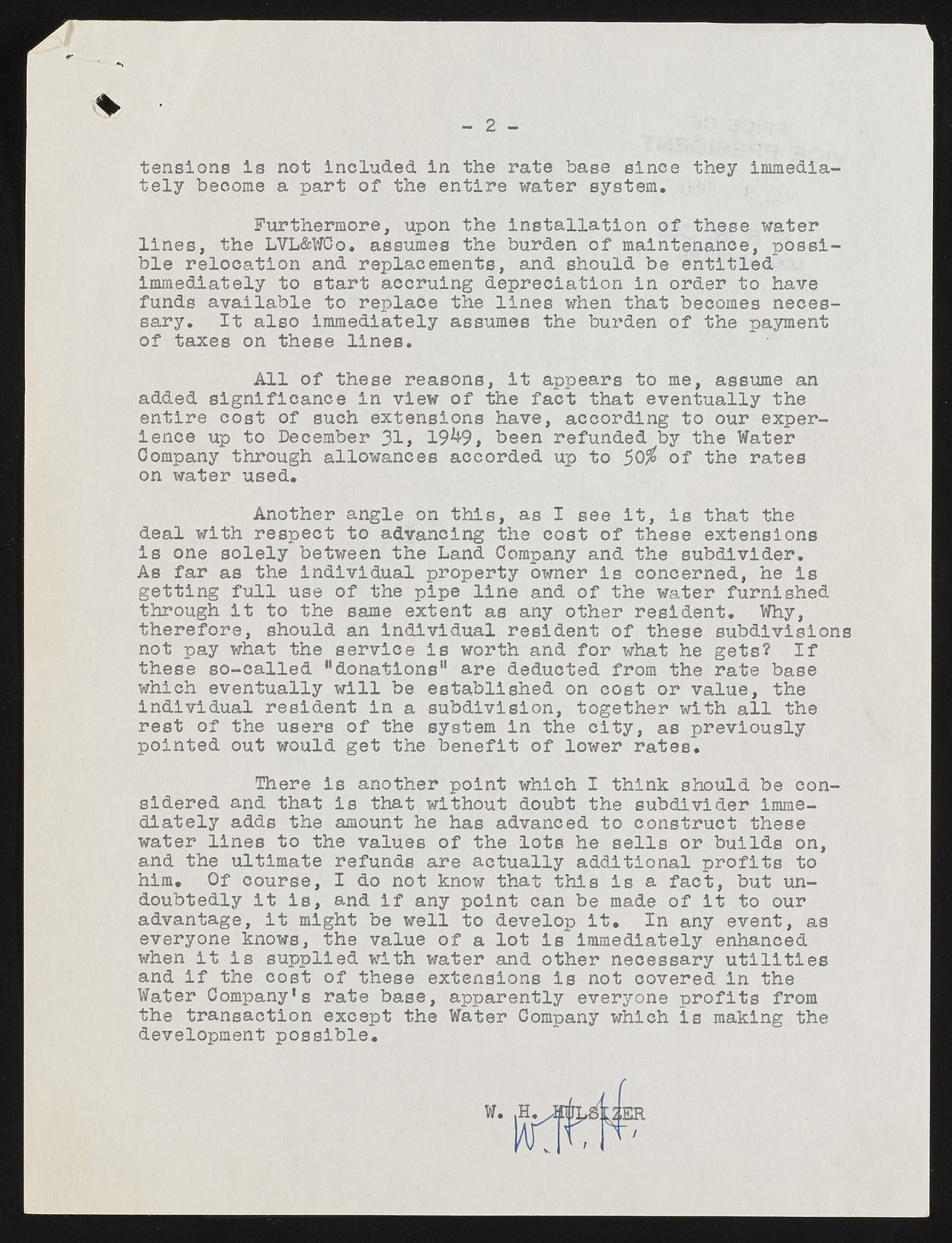Copyright & Fair-use Agreement
UNLV Special Collections provides copies of materials to facilitate private study, scholarship, or research. Material not in the public domain may be used according to fair use of copyrighted materials as defined by copyright law. Please cite us.
Please note that UNLV may not own the copyright to these materials and cannot provide permission to publish or distribute materials when UNLV is not the copyright holder. The user is solely responsible for determining the copyright status of materials and obtaining permission to use material from the copyright holder and for determining whether any permissions relating to any other rights are necessary for the intended use, and for obtaining all required permissions beyond that allowed by fair use.
Read more about our reproduction and use policy.
I agree.Information
Digital ID
Permalink
Details
More Info
Rights
Digital Provenance
Publisher
Transcription
<r tensions is not included in the rate base since they immediately become a part of the entire water system. Furthermore, upon the installation of these water lines, the LVL&WCo. assumes the burden of maintenance, possible relocation and replacements, and should be entitled- immediately to start accruing depreciation in order to have funds available to replace the lines when that becomes necessary. It also immediately assumes the burden of the payment of taxes on these lines. All of these reasons, it appears to me, assume an added significance in view of the fact that eventually the entire cost of such extensions have, according to our experience up to December 3 1 , 19^9, been refunded by the Water Company through allowances accorded up to 50% of the rates on water used. Another angle on this, as I see it, is that the deal with respect to advancing the cost of these extensions is one solely between the Land Company and the subdivider. As far as the individual property owner is concerned, he is getting full use of the pipe line and of the water furnished through it to the same extent as any other resident. Why, therefore, should an individual resident of these subdivisions not pay what the service is worth and for what he gets? If these so-called "donations'* are deducted from the rate base which eventually will be established on cost or value, the individual resident in a subdivision, together with all the rest of the users of the system in the city, as previously pointed out would get the benefit of lower rates. There is another point which I think should be considered and that is that without doubt the subdivider immediately adds the amount he has advanced to construct these water lines to the values of the lots he sells or builds on, and the ultimate refunds are actually additional profits to him. Of course, I do not know that this is a fact, but undoubtedly it is, and if any point can be made of it to our advantage, it might be well to develop it. In any event, as everyone knows, the value of a lot is Immediately enhanced when it is supplied with water and other necessary utilities and if the cost of these extensions is not covered in the Water Company's rate base, apparently everyone profits from the transaction except the Water Company which is making the development possible. - 2 - / r

